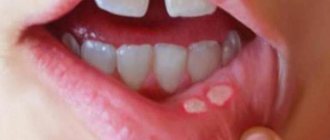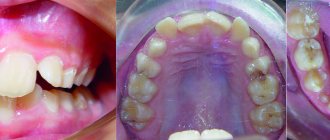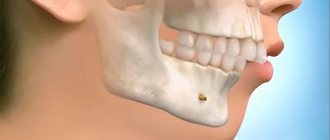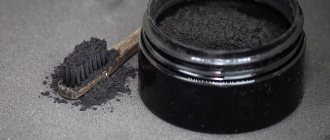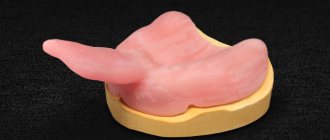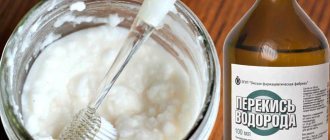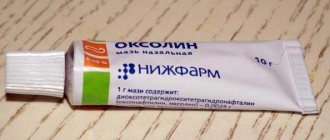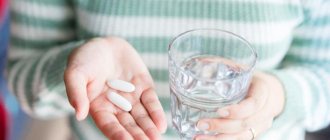Good afternoon, experienced and novice poultry farmers. How is methylene blue used for laying hens, chickens and broilers? Advantages and nuances of using methylene blue in the treatment and prevention of ailments of chickens and other poultry.
It's hard to believe, but the strategy to combat many chicken pathologies is based on the use of methylene blue, also called iodine blue. We are talking about an antiseptic that is used to treat injuries and treat viral, fungal and bacterial ailments.
Let's get acquainted with the drug.
Mechanism of action
Blue helps destroy pathogenic organisms and disinfects surfaces. When administered internally, it has a negative effect on pathogenic flora in the gastrointestinal tract and is widely used for poisoning. Another remedy relieves mild pain. It can be compared with brilliant green, but their mechanism of action is different. Blue iodine stimulates the thyroid gland, which performs the function of protection against harmful microorganisms. When chickens lack this substance, organ dysfunction occurs, which can lead to a decrease in immunity.
The product is poorly soluble in water and alcohol, after penetration into the bacterial body it causes cell dysfunction and the body dies. The medicine is quickly eliminated from the tissues of chickens, which practically eliminates the development of side effects.
How to use, optimal doses
Methylene blue is used externally and internally. Depending on the method of application, a specific dosage is established.
- Outdoor use. For external use, apply blue to pre-cleaned affected areas of the body of an animal or bird. During application, it is important to cover a small area of adjacent healthy tissue. Use a 1-3% alcohol solution of bluing and cotton pads. For urethral infections, take a 0.02% aqueous mixture to rinse the cavities. Methylene blue powder is diluted with water at a ratio of 1:5000. The throat is sanitized using the same method.
- Using blue iodine internally. When birds have coccidiosis, methylene blue is administered orally, diluted in water at a ratio of 1:1. The duration of therapy is 1 week. Young individuals up to 1 month old need 0.5 milliliters 3 times daily. Adult chickens are given 1 milliliter 3 times a day. When it comes to pullorosis, chickens are given half a milliliter of blue. The product is diluted with clean water and given 3 times a day. The duration of the treatment course lasts 10 days-++. In case of poisoning, chickens are injected into the axillary vein with a 1% solution based on a 15% glucose solution. Methylene blue is usually used as an adjunct to primary therapy. As a mono drug, the product is not suitable.
Blue is widely used as a prophylactic agent to increase the protective functions of the body of chickens. It is given 0.3-0.5 ml once a day .
Features of the use of the drug in specific situations
- Respiratory tract diseases. Treatment is carried out once at 2-day intervals.
- Chicken coop equipped with ventilation. While the room is being processed, the ventilation system is turned off. Close doors and windows tightly, otherwise the vapor concentration will be low. We can talk about the effective operation of the product if the vapor concentration is 200 mg/m3;
- Long-term disinfection. In this case, the presence of birds in the room is undesirable. Before the chickens return, the house is ventilated. Of course, its structural elements and equipment are thoroughly washed.
Let there be methylene blue for chickens in your medicine cabinet! Share your experience of treating poultry at home in the comments.
Subscribe to site updates and our channel “Chicken”. Let's take care of poultry together.
Good luck everyone!
Did you like our tips? Share with friends on social media. networks!
What is blue iodine used for?
The scope of application of methylene blue is wide. Indications include:
- disinfection of premises;
- treatment of skin lesions;
- resistance to poisoning;
- treatment of fungal infections;
- elimination of skin parasitic microorganisms;
- relief of pain;
- increased exposure to antimalarials;
- for treating affected areas for genitourinary infections.
On affected tissues, the product creates a protective film.
How is the drug useful for chickens, what does it help with?
Treatment of chickens with methylene blue is used in the following cases:
- skin injuries - eczema, ulcers, burns, wounds;
- poisoning and intoxication of the body;
- fungal diseases;
- skin parasites;
- genitourinary infections.
The product helps to normalize blood pressure, improve immunity, increasing the body's resistance to pathogens. The drug is used as a painkiller.
Additional Information! There is an opinion that methylene blue is the same as brilliant green. But that's not true. Blue has a wider range of indications and effects; it has a gentler effect on the body. Therefore, it will not be possible to replace methylene blue with brilliant green.
Methods for preparing methylene blue
The product can be purchased at a pharmacy or prepared independently. To make it at home, use the recipes below. The first instructions were created by Dr. V. Mokhnach. The second method is less popular, but makes it possible to obtain iodine, which dissolves better and does not irritate the epithelium.
- Recipe 1. You will need 200 ml of water, 1 tbsp. starch, 1 tsp. citric acid, 5% iodine in the amount of 1 dessert spoon. Take 100 ml of warm liquid, add starch and sugar to it. The components are mixed until the mass becomes homogeneous, without lumps. Pour citric acid into it and pour in another 100 ml of water. The mixture is placed on the stove and brought to a boil. It should turn out to be jelly. It needs to be cooled, pharmaceutical iodine poured in, and stirred. The liquid should turn blue. It is poured into a bottle and capped tightly. When interacting with the medicine, observe safety precautions, since it is difficult to wash away. Homemade blue can be stored for 3-4 months. When the composition begins to lose its blue tint, it loses its healing qualities.
- Recipe 2. Take 250 ml of water, 1 tbsp. starch, 5% iodine in the amount of 1 tsp. Pour 50 ml of warm water, starch, pharmaceutical iodine into a small saucepan, stir. Add 200 ml of boiling water to the mixture in a small stream, without ceasing to stir. The result is a paste-like solution. Let cool, pour into a bottle, and seal. Store prepared blue for 3 weeks in the refrigerator.
If you do not follow the proportions, the effectiveness of the product decreases.
General information about the medicine
Where to buy and release form
Methylene blue is sold in almost any pharmacy at an affordable price: from 25 to 50 rubles. It can be purchased without a doctor's prescription.
You can find analogues of the drug, differing in the presence of additional components in the composition: methylene blue, methylene blue, methylthioninium chloride.
The drug is produced in three forms. A 1% alcohol solution is sold, available in 10 ml bottles, powder for making the solution in small 10 g jars. There are also ampoules with methylene blue in glucose solution (20 ml, 50 ml).
Peculiarities
The drug has good solubility. It can be easily diluted in water. It is more difficult to dissolve the powder in alcohol. It will be problematic to prepare such a drug on your own.
When using the medicine, you need to consider the expiration date. The solutions are suitable for use for no more than 3 years from the date of manufacture. There are no restrictions on the use of the powder. It retains its properties if storage rules are observed.
The medicine should be kept in a container with a closed lid in a dry, dark place. Permissible temperature is 15-25 degrees.
Compound
Methylene blue is a dark green powder or crystals.
The product in the ampoule or solution has a blue tint.
In an alcohol solution, its concentration is 100 mg per 10 ml of base.
How to preserve methylene blue, expiration date
Blue bought at a pharmacy does not have a shelf life, provided that the storage conditions are met. Solutions with water or alcohol are suitable for 3 years from the date of issue. After opening, the period of suitability is shortened. The jars should be stored tightly closed, at low humidity and air temperature +15-25. If the blue spills on furniture or clothes, it cannot be washed off.
Methylene blue checker
Iodine checkers are widely used in the treatment and prevention of pathological conditions in birds. They are purchased at the pharmacy; they have high permeability. Checkers are used for the following purposes:
- disinfect the chicken coop;
- prevent outbreaks of epidemics;
- implement therapy during outbreaks of infections.
An alternative form of the drug is checker
Today you have the opportunity to acquire blue checkers. Such products are sold in the form of a bulk mass, products in jars and tablets.
It would be unfair not to note the annual increase in the popularity of checkers. Naturally, this pattern is associated with their high efficiency, explained by the deep permeability of iodine vapor.
Ways to use checkers:
- Disinfection of the chicken coop;
- prevention of large-scale damage to the herd by diseases;
- therapeutic treatment during epidemics.
Before using the innovative product, there is no need to empty the poultry house of chickens.
How is a checker used? The first step is to find a material that is resistant to fire. You can use iron sheet, concrete surface, brick. A checker is placed on them and set on fire. That's all. The checker works for about half a minute.
Indications for use
External use Methylene blue is effective for pyoderma, burns, folliculitis, and other skin diseases.
You can use the product for washing the affected cavities for urethritis and cystitis.
You can also take Methylene blue solution orally for urethritis, cystitis, and other inflammations of the urinary tract.
The drug is administered intravenously for poisoning.
Also, the instructions for Methylene Blue indicate that it can be used to diagnose renal function - due to the fact that after internal use of the drug, urine turns blue.
Instructions for use
For external use, Methylene Blue is used in the form of an alcohol solution of 1-3%. Treat the affected (pre-cleaned) areas using a cotton swab. Apply the solution to both damaged and adjacent healthy tissue.
For rinsing with cystitis and urethritis, use an aqueous 0.02% solution (the powder is diluted in a ratio of 1:5000)
Adults take methylene blue orally, according to the instructions, 0.1 g three or four times a day.
Children also take the solution three or four times a day, but the required amount of the drug is calculated based on the child’s age: 0.005-0.01 g for one year.
Contraindications and side effects
When used externally, blue rarely causes unwanted reactions. The most common effects: skin irritation, itching, burning. When treating the oral cavity with an alcohol solution, burns are possible. In such cases, the use of the drug should be abandoned.
Taking methylene blue internally can cause a violent reaction from the body:
- nausea, vomiting, loss of appetite
- colic in the stomach and abdominal cavity;
- impaired diuresis;
- asthenia;
- physical weakness;
- increased sweating.
Subsequently, treatment with the drug may deteriorate the absorption of food and the absorption of some microelements from it. The development of anemia and exacerbation of gastritis are likely.
Methylene blue is contraindicated in children under 1 year of age. Internal use is prohibited during pregnancy and lactation. It is also necessary to avoid use in case of allergic reactions.

